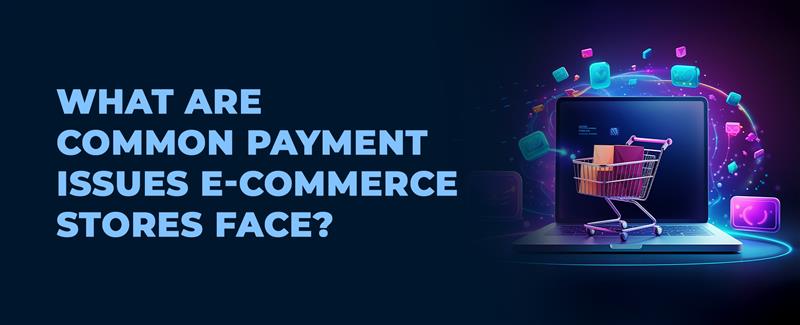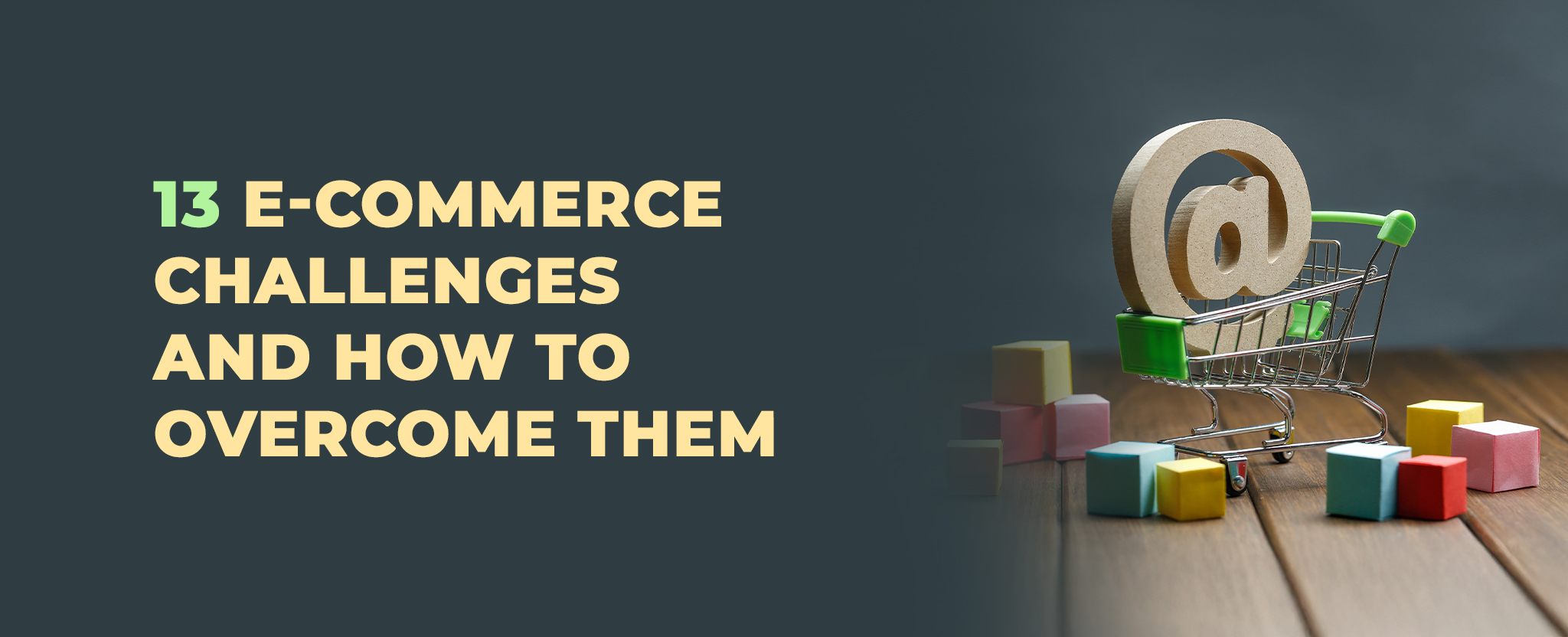What Are Common Payment Issues E-commerce Stores Face?
14 Feb 25 


E-commerce has revolutionized the way businesses operate, making it easier for customers to shop from anywhere. However, one of the most critical aspects of running an online store is managing payments efficiently. Payment-related issues can lead to lost sales, frustrated customers, and financial losses. In this blog, we will explore the most common payment issues e-commerce stores face and how to address them.
Cart Abandonment Due to Payment Failures
One of the biggest challenges e-commerce businesses encounter is cart abandonment. Customers may fill their carts but leave without completing the purchase due to payment failures. This can happen due to declined transactions, poor payment gateway experience, or technical glitches. A complicated checkout process with multiple unnecessary steps can further frustrate customers, leading them to abandon their carts. Additionally, expired payment methods or insufficient funds can contribute to failed transactions. Businesses that fail to address these issues may experience a high cart abandonment rate, negatively impacting their revenue and conversion rates.
Solution:
- Offer multiple payment methods, including credit/debit cards, digital wallets, and Buy Now, Pay Later (BNPL) options.
- Optimize the checkout process to be fast and user-friendly.
- Display error messages clearly and provide quick solutions for failed payments.
- Enable automatic retries for declined payments and notify users immediately to update payment details.
Fraudulent Transactions
Online fraud is a major concern for e-commerce stores. Fraudulent transactions, including identity theft, chargebacks, and unauthorized purchases, can lead to revenue loss and damage brand credibility. Cybercriminals often use stolen credit card information to make purchases, resulting in disputes and chargebacks. Fraudulent activities also include phishing scams that trick customers into providing sensitive information. Without proper security measures, businesses may face an increase in fraudulent transactions, leading to financial instability and loss of customer trust.
Solution:
- Implement strong security measures like two-factor authentication (2FA) and CVV verification.
- Use fraud detection tools and AI-based monitoring systems to identify suspicious transactions.
- Educate customers about safe online shopping practices.
- Regularly update security protocols to stay ahead of evolving fraud tactics.
Chargebacks and Refund Disputes
Chargebacks occur when customers dispute a transaction and request a refund through their bank. High chargeback rates can lead to penalties from payment processors and even account suspensions. Chargebacks can result from genuine errors, unauthorized transactions, or customers falsely claiming they did not receive the product. Excessive chargebacks can categorize a business as high-risk, increasing transaction fees and reducing credibility with payment processors. Managing chargebacks effectively is crucial to maintaining a healthy financial status and positive customer relationships.
Solution:
- Maintain clear refund and return policies.
- Provide excellent customer support to resolve disputes before they escalate to chargebacks.
- Keep transaction records and proof of delivery to defend against false claims.
- Use automated chargeback management tools to monitor and handle disputes efficiently.
Currency Conversion and Payment Processing Fees
For global e-commerce businesses, dealing with multiple currencies can be complex. Customers may face unexpected conversion fees, making them hesitant to complete purchases. Differences in exchange rates can lead to inconsistent pricing, affecting customer satisfaction. Additionally, payment processors may charge high fees for international transactions, reducing profit margins. Businesses that do not provide transparent currency conversion options may struggle with abandoned carts and decreased customer trust.
Solution:
- Offer multi-currency support and allow customers to pay in their local currency.
- Display conversion rates transparently.
- Choose payment processors with competitive transaction fees.
- Consider integrating localized payment options to minimize conversion costs for customers.
Slow Payment Processing and Settlement Delays
Delayed payment processing can create cash flow issues for e-commerce businesses, affecting inventory restocking and operational costs. Payment delays may be caused by slow bank processing times, errors in transaction authorization, or payment gateway issues. If businesses cannot access funds quickly, they may struggle to manage daily operations efficiently. Customers also expect instant payment confirmation, and delays can lead to a lack of trust in the e-commerce platform.
Solution:
- Use reliable payment gateways that offer fast settlement times.
- Opt for real-time payment solutions where possible.
- Monitor payment processing times and switch providers if necessary.
- Implement automated payment reconciliation to identify and resolve settlement delays.
Limited Payment Methods
Customers have different payment preferences, and restricting them to a few options can lead to lost sales. Some customers may prefer digital wallets, while others rely on traditional bank transfers. Offering only a limited selection of payment methods can alienate potential customers and push them to competitors with better flexibility. Additionally, not supporting region-specific payment options can hinder international sales, affecting revenue growth.
Solution:
- Integrate a variety of payment options, including credit/debit cards, PayPal, digital wallets, and cryptocurrencies.
- Use a payment gateway that supports multiple options and regions.
- Regularly update payment methods based on customer demand.
- Conduct customer surveys to understand their preferred payment methods and adapt accordingly.
Technical Glitches and Downtime
Payment gateway failures or website downtimes can prevent customers from completing transactions, leading to revenue loss and frustration. If a customer experiences errors during checkout, they may not return to complete their purchase. Technical glitches can arise from software bugs, server outages, or compatibility issues with certain devices. Ensuring a stable payment processing system is crucial for maintaining a smooth customer experience and preventing revenue loss.
Solution:
- Regularly test and update payment systems to ensure smooth transactions.
- Have backup payment gateways in place.
- Use real-time monitoring tools to detect and fix issues quickly.
- Work with reliable hosting services to prevent downtime-related payment failures.
Inconsistent Payment Security Compliance
E-commerce businesses must comply with security standards like PCI DSS (Payment Card Industry Data Security Standard) to protect customer data. Non-compliance can lead to data breaches and legal issues. Failure to meet security standards can also result in fines, reputational damage, and loss of customer trust. Many businesses struggle to keep up with compliance updates, putting themselves at risk of cyber threats.
Solution:
- Work with PCI-compliant payment providers.
- Encrypt customer data and use SSL certificates.
- Conduct regular security audits and updates.
- Train employees on compliance best practices to maintain data security.
Subscription and Recurring Payment Issues
For e-commerce businesses offering subscription-based services, failed recurring payments can lead to service interruptions and revenue loss. Customers may have expired credit cards, insufficient funds, or subscription cancellation errors. If recurring payments fail frequently, it can affect customer retention and result in unnecessary churn. Managing subscription payments effectively is essential for a stable revenue model.
Solution:
- Send automated reminders before subscription renewals.
- Offer multiple billing cycles and payment methods.
- Allow customers to update payment details easily.
- Use dunning management strategies to recover failed subscription payments.
Mobile Payment Optimization Challenges
With the rise of mobile shopping, businesses must ensure that mobile payments are seamless. Poorly optimized mobile checkout experiences can lead to abandoned transactions. Mobile users expect a fast, intuitive, and secure payment process. If a website is not mobile-responsive, customers may struggle with entering payment details or completing transactions.
Also read Impact of E-commerce on Business: Opportunities & Challenges
Solution:
- Ensure that your payment gateway is mobile-friendly.
- Enable one-click payment options for faster transactions.
- Optimize the checkout process with autofill and saved payment details.
- Conduct regular mobile usability testing to improve the payment experience.
Final Thoughts
Payment issues in e-commerce can negatively impact customer trust and business revenue. By identifying and addressing these common challenges, online store owners can create a seamless payment experience, reduce transaction failures, and increase sales. Implementing secure and customer-friendly payment solutions will ensure long-term success in the competitive e-commerce landscape.
- Agentic AI1
- Android Development3
- Artificial Intelligence34
- Classified App3
- Custom App Development5
- Digital Transformation12
- Doctor Appointment Booking App14
- Dropshipping1
- Ecommerce Apps40
- Education Apps2
- Fintech-Apps37
- Fitness App4
- Flutter4
- Flutter Apps20
- Food Delivery App5
- Grocery App Development1
- Grocery Apps3
- Health Care10
- IoT2
- Loyalty Programs9
- Matrimony Apps1
- Microsoft1
- Mobile App Maintenance2
- Mobile Apps129
- Product Engineering6
- Progressive Web Apps1
- React Native Apps2
- Saas Application2
- Shopify9
- Software Development3
- Taxi Booking Apps7
- Truck Booking App5
- UI UX Design8
- Uncategorized6
- Web App Development1



















Comments